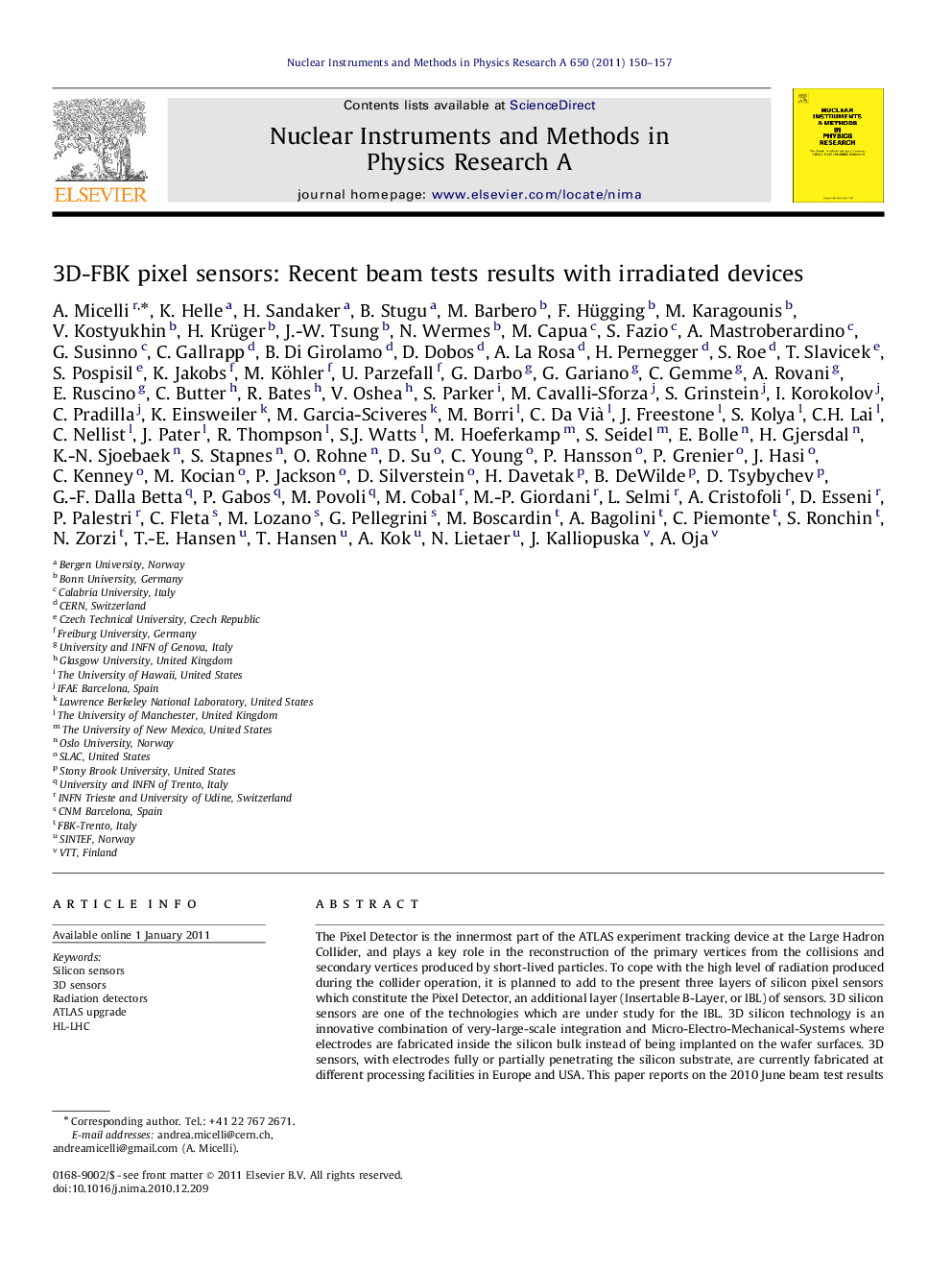| Article ID | Journal | Published Year | Pages | File Type |
|---|---|---|---|---|
| 1824740 | Nuclear Instruments and Methods in Physics Research Section A: Accelerators, Spectrometers, Detectors and Associated Equipment | 2011 | 8 Pages |
The Pixel Detector is the innermost part of the ATLAS experiment tracking device at the Large Hadron Collider, and plays a key role in the reconstruction of the primary vertices from the collisions and secondary vertices produced by short-lived particles. To cope with the high level of radiation produced during the collider operation, it is planned to add to the present three layers of silicon pixel sensors which constitute the Pixel Detector, an additional layer (Insertable B-Layer, or IBL) of sensors. 3D silicon sensors are one of the technologies which are under study for the IBL. 3D silicon technology is an innovative combination of very-large-scale integration and Micro-Electro-Mechanical-Systems where electrodes are fabricated inside the silicon bulk instead of being implanted on the wafer surfaces. 3D sensors, with electrodes fully or partially penetrating the silicon substrate, are currently fabricated at different processing facilities in Europe and USA. This paper reports on the 2010 June beam test results for irradiated 3D devices produced at FBK (Trento, Italy). The performance of these devices, all bump-bonded with the ATLAS pixel FE-I3 read-out chip, is compared to that observed before irradiation in a previous beam test.
